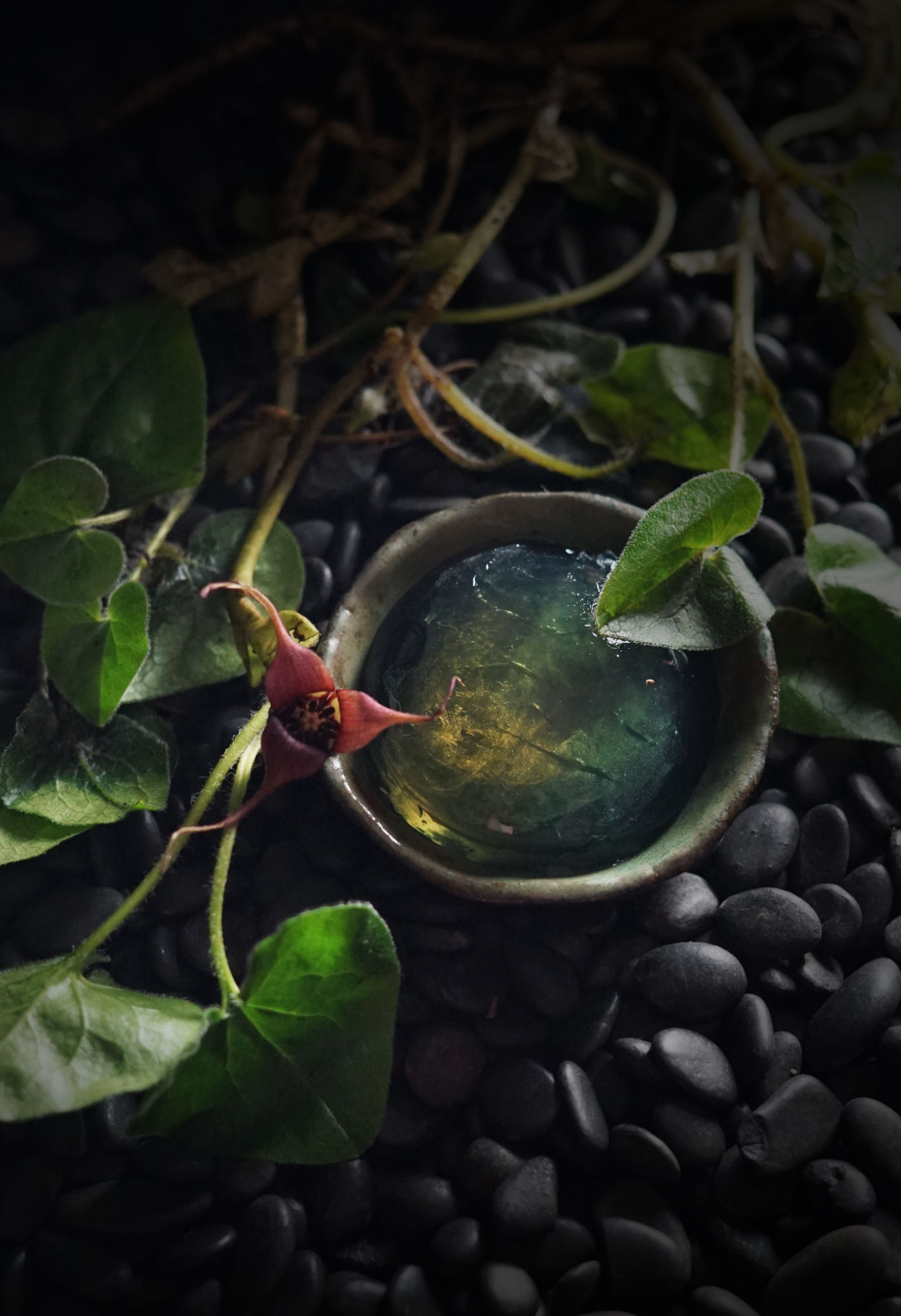April Fools! Wild Ginger Labradorite Dessert
If you’re looking for a more sophisticated option for April Fool’s Day, I’ve got you covered! Rather than serving your guests toothpaste-filled oreo cookies, why not bring out giant gemstones for dessert instead? It’s a win all around!
An old Inuit legend about labradorite says that long ago, the Northern Lights fell from the sky and become trapped inside some rocks off the coast of Labrador. The sky remained dark and these shimmering rocks sat undisturbed until a warrior came upon them and was transfixed by their beauty. He tried to set these magnificent lights free by striking the rocks with his spear. Most of the lights escaped and returned to their sky home, but some remained permanently imprisoned within the rocks, illuminating their grayness with ephemeral dancing light. According to this legend, that is what gives the stone labradorite its bright shimmers of blue and green.
Labradorite speaks of the sea, of underwater mysteries and treasures glimmering far beneath the surface. It is a stone of mysterious beauty, so stunning you can almost taste it. That was the inspiration for this dessert. I asked myself “if labradorite was a food, what would it taste like?” The answer came to me: it would taste like something dark and mysterious, indicative of dark forests or the shimmering depths of the ocean. It would be something herbaceous and refreshing, like glimmering water. It would taste like wild ginger.
This gelatin-based dessert shimmers with the beauty of trapped sunlight, northern lights, bioluminescence. It’s served with a sauce of juicy blackberries, as dark as the night sky or the depths of the sea. It is delicate and fresh, making it the perfect spring dessert. Wild ginger has a much more gentle flavor than ginger root, plus a refreshing citrus undertone. It pairs beautifully with green tea to make a simple and stunning dessert.
*A note on wild ginger (asarum caudatum): Both of the wild ginger plants that grow in the Pacific Northwest (the other being asarum canadense) contain small amounts of aristolochic acid, which is a toxin and carcinogen. Consumed in high amounts, studies have shown that it can cause serious kidney problems. But here’s the thing: aristolochic acid is barely soluble in water (less than 1%), which perhaps explains why most of the Indigenous uses were as a tea, where the plant matter itself was discarded. There’s a very small amount of wild ginger in this dessert, which is split into several servings. It’s also only steeped in water. I certainly wouldn’t recommend you go out and eat a salad of wild ginger greens (nor should you steep them in alcohol or vinegar), but in my opinion this recipe presents a safe, very low dose. Do keep in mind that everyone’s reactions to wild plants is different, though, and eat at your own risk. You can learn more about wild ginger here.
Labradorite Jelly Dessert:
Mixture 1:
1/2 c. + 1 Tbs. water
1 bag green tea
1 tsp. wild ginger leaves (dried)
1 Tbs. sugar
1 tsp. gelatin
Directions:
Put the 1 Tbs. of water in a small bowl. Sprinkle the gelatin on top and let bloom. Heat up the remaining water and put the green tea and wild ginger in it. Let steep 5 minutes, then strain and stir in the sugar and gelatin until well dissolved. Pour into molds (about 1/2” thick) and chill until set up.
Mixture 2:
1 1/4 c. water
2 bags green tea
2 tsp. wild ginger leaves (dried)
1 tsp. butterfly pea flowers
2 Tbs. sugar
2 tsp. gelatin
edible luster in gold, silver, and blue
Directions:
Start the tea steeping earlier this time; heat up the water and put in the green tea, wild ginger, and butterfly pea flowers. Let steep for a few hours. Strain. Put 2 Tbs of the tea into a small dish and sprinkle the gelatin over the top. Heat up 1 c. of tea and then mix in the sugar and gelatin. Let cool a little bit.
Let cool slightly, then pour a very small amount of liquid into each mold so that it is about 1/8” thick on top of the already-set gelatin. Using the tip of your finger or a small paintbrush, add a little luster to the mixture. Smear it on the already-set gelatin and mix gently. Use both colors. Try to keep the luster more focused in the middle. You don’t need much - a little goes a long way! A thinner layer is more believable. Use very sparingly. Let set up in the fridge (should only take a few minutes.)
Using a small, sharp knife, cut a few incisions through the luster layer. This makes the gem more life-like. Then pour another thin layer of mixture #2 on top gently so as not to disturb the luster and let chill for another 5-10 minutes.
Finally, pour the rest of the mixture #2 on top and let set up. To un mold, place the molds in warm water for a few minutes and then gently un-mold onto a serving plate. Serve with blackberry sauce (recipe below.)
Blackberry sauce:
Ingredients:
2 c. blackberries
2 Tbs. sugar
Directions:
Cook in a medium saucepan for 20-25 minutes over medium-low until the berries have softened and the mixture has thickened. Let cool and chill.
Love what you’ve read here? Don’t forget to Subscribe to get frequent updates of new posts!
Huge thanks to my Patrons that make sharing all of these lovely posts with you possible (without all of the pop-ups and ads that make browsing other blogs so annoying). If you’re feeling generous, you too can support the wonder with a monthly contribution of your choice. Even $1 helps a lot! Your donation will help to fund this blog as well as my surprise free events and gifts for strangers. Learn more about this program at the link below:
*New to foraging and don’t know where to start? Check out this blog post on Foraging 101!



















Join me for a little winter night magic as we bake this cake full of rich seasonal flavors and black cocoa!